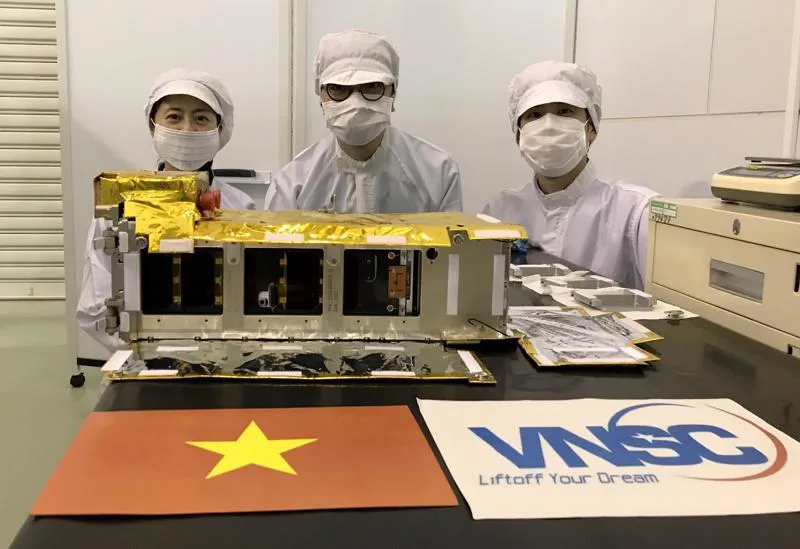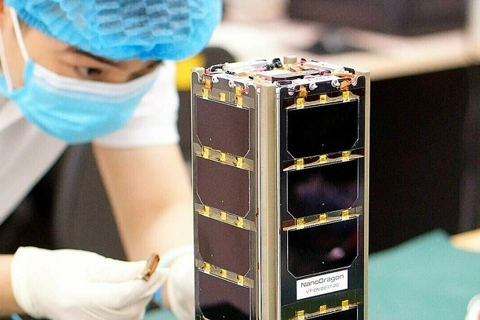Vietnam-made satellite slated to be launched on October 1
The satellite is the product of a project to create a nano-satellite under Vietnam's National Science and Technology Program on space technology in the period of 2016-2020.
A made-in-Vietnam satellite, NanoDragon, will be launch into outer space between 7:48-7:59am on October 1 (Hanoi time), according to the Vietnam National Space Centre (VNSC).
The center said that it received a notification from the Japan Aerospace Exploration Agency (JAXA) on the launching plan on August 20.
NanoDragon is expected to be launched into orbit at the height of about 560 kilometers from the Uchinoura Space Center launch site in the Japanese southern prefecture of Kagoshima.
The satellite, a CubeSat that weighs nearly four kilograms, was developed by the Vietnam National Space Center (VNSC) under the Vietnam Academy of Science and Technology.
NanoDragon satellite was handed over to Japan on August 17, 2021, to prepare for launch. Photo: VNSC |
Earlier, the NanoDragon satellite was sent to Japan on August 12 and tested at Uchinoura Space Centre from August 16-17 after being officially transferred to the JAXA for launching under the second "Innovative satellite technology demonstration" program.
The satellite is the product of a project to create a nano-satellite under the National Science and Technology Program on space technology in the period of 2016-2020.
The process of researching, designing, integrating, and testing the satellite's functions was carried out completely in Vietnam by VNSC researchers.
NanoDragon is tasked with using micro-satellite constellation technology to receive automatic identification signals of ships for the purpose of tracking and monitoring vehicles at sea.
NanoDragon will have two main tasks, namely the monitoring of marine vehicles with an automatic identification system and the use of an optical imaging device to verify the quality of the satellite's position controller when operating in orbit.
In early March, the satellite had passed all quality-control tests in Japan as it underwent vibration, shock, and thermal vacuum testing in a simulated pre-launch environment, the last steps in its hardware development, at the Kyushu Institute of Technology in Japan.
Previously, the VNSC also successfully developed the one-kilogram supermicro satellite PicoDragon and the 50-kilogram satellite MicroDragon, which were launched into orbit in 2013 and 2019, respectively. They have successfully sent pictures from space to its ground station in Japan.











